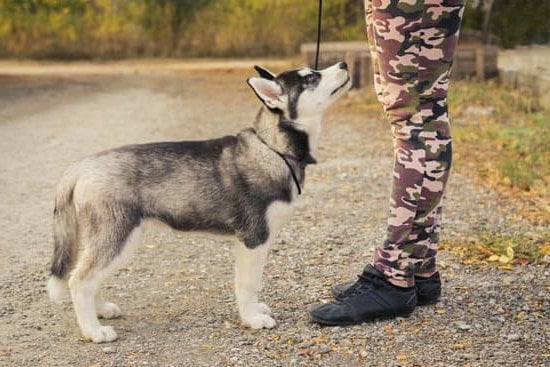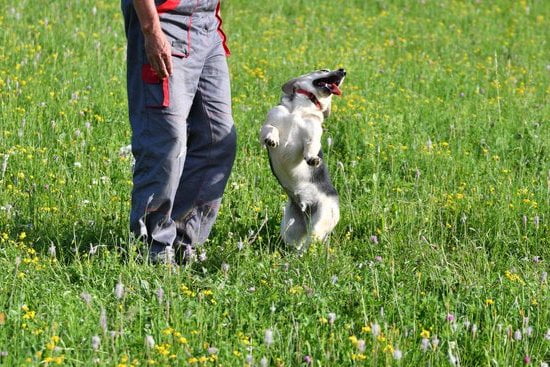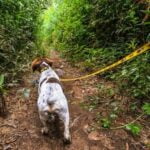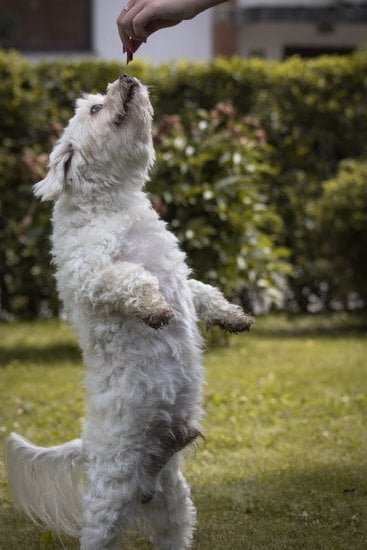Training your dog to take treats gently is an essential skill that every dog owner should strive to teach their furry friend. Not only does this behavior ensure the safety of both you and your dog, but it also promotes a positive and respectful relationship between you and your canine companion. In this article, we will explore the importance of training a dog to take treats gently and provide you with a comprehensive guide on how to achieve this behavior.
Many dogs can exhibit rough behavior when taking treats, such as snatching them out of your hand or using excessive force with their mouths. While this may seem harmless at first, it can quickly escalate to accidents or injuries. Teaching your dog to take treats gently is crucial in preventing any unfortunate incidents and establishing good manners in your pet.
Creating a safe training environment for both you and your dog is paramount when embarking on this training journey. Clearing away any potential distractions and ensuring a calm atmosphere will allow you to focus on the task at hand.
Additionally, utilizing positive reinforcement techniques, such as rewards and praise, will encourage your dog to associate gentle treat-taking behavior with positive experiences. By following a step-by-step guide and addressing common challenges along the way, you will be equipped with the tools necessary for successful training sessions.
Understanding the Basics
Dogs can sometimes be rough when taking treats, which can lead to uncomfortable or even painful experiences for their owners. Understanding why dogs exhibit this behavior is essential in order to effectively train them to take treats gently.
One reason dogs can be rough when taking treats is because they are excited or anxious about receiving the treat. Dogs have a natural instinct to snatch food quickly, and this behavior can carry over into treat-taking. Additionally, some dogs may not have been properly trained or socialized to understand how to take treats gently.
Another factor that can contribute to rough treat-taking behavior is a lack of impulse control. Dogs who haven’t learned to wait patiently for their treats may become pushy or grab at the treat with force. This behavior is often unintentional, but it can still be problematic and potentially result in accidental bites or scratches.
To address these issues, it is important for dog owners to use positive reinforcement techniques and create a calm training environment. By rewarding gentle treat-taking behaviors and providing consistent training, dog owners can help their pets develop better impulse control and learn how to take treats more politely.
Here are some steps you can take to understand why your dog may be rough when taking treats
- Observe your dog’s body language: Pay attention to any signs of excitement or anxiety when your dog sees a treat.
- Consider previous training experience: If your dog has not been properly trained or socialized around treats, they may not know what is expected of them.
- Evaluate impulse control: Determine if your dog has difficulty waiting for their treats calmly and if they have a tendency to grab forcefully.
By understanding these basics, you will set yourself up for success in training your dog to take treats gently.
Safety Precautions
Training your dog to take treats gently is not only about teaching them good manners, but also about ensuring their safety and the safety of those around them. It is important to create a safe training environment where both you and your dog can feel comfortable and secure. Here are some safety precautions to keep in mind:
- Choose a quiet and distraction-free space: Find a calm and quiet area where you can focus on training without interruptions or distractions. This will help keep your dog’s attention on the training session and prevent any unnecessary stress or accidents.
- Use appropriate treats: Make sure to use treats that are safe for dogs, avoiding any ingredients that may be harmful or cause allergies. Choose small, soft treats that are easy for your dog to eat without the risk of choking. It is also important to moderate the amount of treats given during training to avoid overfeeding.
- Maintain proper body positioning: Stand or sit in a way that allows you to easily control the situation if needed. Avoid leaning over your dog or invading their personal space, as this may make them anxious or defensive. Instead, maintain a relaxed posture and give your dog enough room to take the treat calmly.
To ensure a safe training environment, it is crucial to consider both your dog’s physical well-being and their emotional state. By following these safety precautions, you can create a positive training environment that promotes trust between you and your dog.
- Pick an appropriate space.
- Choose safe treats.
- Maintain proper body positioning.
Positive Reinforcement
When training a dog to take treats gently, positive reinforcement is a crucial tool. This technique focuses on rewarding desired behaviors to encourage their repetition. By using rewards effectively, you can teach your dog to associate taking treats gently with positive outcomes, reinforcing this behavior over time.
One of the most common types of reward used in positive reinforcement training is food. However, it’s essential to choose appropriate treats for this type of training. Opt for small, soft treats that are easy for your dog to consume without biting down forcefully. This will help prevent any unintentional roughness during treat-taking.
In addition to choosing the right type of treat, timing is key when using positive reinforcement. As soon as your dog exhibits gentle behavior while taking a treat, immediately praise them and offer a reward. By doing so consistently, your dog will start associating gentle treat-taking with the pleasurable experience of receiving praise and a tasty snack.
Furthermore, it’s important to keep in mind that each dog is unique and may respond better to different types of rewards. While food treats are often effective, some dogs may be more motivated by verbal praise or affectionate pets. Observing your dog’s preferences and tailoring the rewards accordingly can enhance the effectiveness of positive reinforcement training.
To track your progress and gain insights into what motivates your furry friend during treat-taking training sessions, consider keeping a record or logbook. Note down details such as the type of reward used and its effectiveness, any challenges encountered during the session, and any improvements or breakthroughs achieved by your dog. Reviewing these records periodically can help you adjust your strategy if necessary and celebrate milestones along the way.
| Reward Type | Effectiveness |
|---|---|
| Food treats | 🟢🟢🟢🟣 |
| Verbal praise | 🟢🟢 |
| Affectionate pets | 🟡🟡 |
Step-by-Step Guide
Training your dog to take treats gently is an important skill that can ensure a safe and enjoyable experience for both you and your furry friend. By following these step-by-step techniques, you can teach your dog to take treats gently and prevent any accidental nipping or rough behavior.
- Start with basic obedience training: Before focusing specifically on treat-taking behavior, it is important to establish a foundation of basic obedience training with your dog. Teach them commands such as “sit” or “stay” so they understand how to follow instructions.
- Use high-value treats: Choose treats that your dog finds highly motivating and rewarding. This could be small pieces of cooked chicken, cheese, or even commercial treats specially designed for training purposes.
- Present the treat in a closed fist: Begin by presenting the treat in a closed fist to prevent any snap behavior from your dog. If they attempt to grab the treat forcefully, close your hand immediately and wait until they calm down before trying again.
- Reward gentle behavior: As soon as your dog shows any sign of gentleness when trying to take the treat, open your hand slightly and allow them to take it without snatching. Pair this action with positive reinforcement such as verbal praise or petting.
- Repeat and increase difficulty gradually: Practice this technique repeatedly, gradually increasing the level of difficulty by exposing your dog to different situations where they need to exhibit gentle treat-taking behavior. For example, have someone else hold the treat while you monitor their response.
Remember that consistency is key when teaching any new behavior to your dog. Be patient throughout the process and avoid punishing or scolding rough behavior as it may escalate the problem. Instead, reward and positively reinforce gentle behavior consistently to reinforce the desired outcome.
| Date | Observed Behavior |
|---|---|
| Week 1 | Initially snaps at treat, but starts showing improvement with gentle behavior |
| Week 2 | Much better at taking treats gently, occasional lapses in behavior |
| Week 3 | Takes treats gently consistently, even in various situations and environments |
By following this step-by-step guide and keeping track of your dog’s progress, you can effectively train your furry friend to take treats gently and foster a harmonious relationship based on trust and mutual respect.
Common Challenges
Training a dog to take treats gently can sometimes pose challenges. Despite your best efforts and intentions, your dog may not immediately grasp the concept or exhibit persistent rough behavior. However, by anticipating and addressing these potential hurdles in the training process, you can overcome them and continue making progress.
One common challenge that dog owners may face is that their dogs become too excited during treat-taking, leading to rough behavior. In such cases, it is important to remember that this excitement stems from their eagerness to receive the treat rather than any intentional aggression.
To address this challenge, you can incorporate additional commands during the training process. For instance, using a “sit” or “wait” command before giving the treat can help your dog learn impulse control and calm down before taking the treat gently.
Another common challenge is when a dog has previously been reinforced for rough behavior during treat-taking. This may have unintentionally taught them that being forceful will yield better results. To address this issue, it is crucial to be patient and consistent in your training approach. Focus on rewarding and reinforcing only gentle behavior while ignoring any rough behavior. Over time, your dog will learn that gentle treat-taking is what leads to rewards.
Some dogs may also display a fear-based response when taking treats or even reject them altogether due to previous negative experiences or lack of trust. To address this hurdle, it’s important to create a safe and comfortable environment during training sessions. Use high-value treats that your dog finds irresistible and gradually build trust through positive reinforcement techniques such as clicker training or verbal praise.
By acknowledging these common challenges in advance and understanding how to address them, you can navigate through any difficulties that may arise during the training process. Remember that consistency, patience, and positive reinforcement are key throughout this journey of teaching your dog to take treats gently.
Troubleshooting
Identifying the Root Cause
Addressing persisting rough behavior when taking treats requires identifying the root cause behind it. Every dog is unique, and the reasons for this behavior may vary. It is essential to observe your dog closely to determine what triggers their rough behavior. Some common causes include excitement, fear, possessiveness, or even previous negative experiences.
If your dog becomes overly excited when receiving treats, try practicing some calming exercises before training sessions. Teaching them basic commands such as “sit” or “stay” can help redirect their energy and instill self-control. If fear is the underlying issue, create a safe and calm environment by using soothing tones and gentle movements during treat-giving moments.
Implementing Desensitization Techniques
Desensitization techniques are an effective way to address persisting rough behavior in dogs. Gradually exposing your dog to situations where they typically exhibit roughness can help them become more comfortable and controlled in those circumstances.
Start by offering treats from your hand with a closed fist, allowing them only to sniff or lick it gently. Slowly progress by opening your hand slightly while reinforcing calm behavior with positive reinforcement. Over time, increase the duration of contact between their mouth and your hand until they consistently take treats gently.
Avoid Reinforcing Rough Behavior
It is crucial not to inadvertently reinforce rough behavior when training your dog to take treats gently. Avoid reacting negatively or punishing them for being rough, as this can lead to confusion and anxiety. Instead, focus on rewarding calm behavior with praise, treats, or other forms of positive reinforcement.
Additionally, be mindful of unintentional reinforcement that may occur outside of training sessions. For example, if you give in to your dog’s demands for a treat by feeding them without proper manners at any other time, it may undermine the progress made during training. Consistency is key, and reinforcing gentle treat-taking behavior should be maintained in all contexts.
By troubleshooting and addressing any persisting rough behavior, you can help your dog become a model of politeness when it comes to taking treats. Remember to have patience, as every dog learns at their own pace. With time and consistent training, you will see progress and create a stronger bond with your furry friend.
Consistency and Patience
Consistency and patience are key when it comes to training your dog to take treats gently. It is important to understand that this process takes time and effort, but the results will be worth it. By consistently practicing and being patient with your dog, you can instill a lifelong habit of gentle treat-taking behavior.
Setting a Training Schedule
To maintain consistency in your training, it is essential to establish a regular training schedule. This means dedicating specific times each day or week for training sessions with your dog. Consistency will help reinforce the desired behavior and prevent any confusion or setbacks.
Using Clear and Consistent Commands
Consistency in the commands you use is also crucial for effective training. Choose simple, clear, and consistent verbal cues such as “gentle” or “easy.” Use these commands every time you give your dog a treat, reinforcing the association between the command and the desired behavior.
Rewarding Small Steps of Progress
Patience plays an important role in the training process. Remember that dogs learn at their own pace, so be patient with them as they strive to understand what you expect from them. Celebrate even small steps of progress by rewarding your dog with positive reinforcement such as praise or additional treats. This not only motivates your dog but also helps build their confidence.
Understanding Setbacks
It’s important to remember that setbacks may happen during the training process. If your dog starts exhibiting rough behavior again, don’t get discouraged or frustrated. Instead, reassess the situation and identify any potential triggers for this behavior. With consistency and patience, address these triggers through additional training sessions focused on reinforcing gentle treat-taking behavior.
By emphasizing consistency and patience throughout the training process, you can effectively train your dog to take treats gently. Remember that each dog learns at their own pace, so be patient and celebrate the small victories along the way. With time and effort, you will achieve success in teaching your dog this important behavior.
Beyond Treat-taking
Training your dog to take treats gently is not only beneficial for treat-giving situations but also sets a foundation for teaching other behaviors and commands. Once your dog has mastered the art of gentle treat-taking, you can expand their training to include various desired actions. By building upon their understanding of positive reinforcement and obedience, you can create a well-behaved and responsive canine companion.
One important behavior to focus on is sitting. Teaching your dog to sit on command provides them with a basic level of control and enables you to manage their behavior in different environments. Begin by holding a treat close to your dog’s nose and then slowly raise it above their head.
As they follow the motion of the treat, their rear end should naturally lower into a sitting position. The moment they sit, praise them enthusiastically and offer the treat as a reward. With consistent repetition, they will begin to associate the command “sit” with the action.
Another behavior that can be expanded upon is leash walking. A well-trained dog that walks calmly on a leash is a joy to be around and makes every outing more enjoyable. Start by ensuring your dog has an appropriate harness or collar that fits comfortably but securely. Begin in a quiet area with minimal distractions and encourage your dog to walk beside you using verbal cues or treats as motivation.
Remember to reinforce positive behaviors with rewards and praise, gradually increasing the duration of walks and introducing more challenging environments as your dog progresses. Be patient during this process – learning proper leash manners takes time, consistency, and practice.
Expanding training beyond treat-taking also means having expectations for behaviors such as “stay,” “come,” or “leave it.” Each command requires different techniques and levels of difficulty, so it’s essential to break these tasks down into small steps for your dog to understand clearly.
With continued training efforts, patience, consistency, and positive reinforcement methods, your furry friend will learn new behaviors beyond just gentle treat-taking. Remember that training is an ongoing process, and it’s important to practice regularly to maintain the learned behaviors and expand your dog’s skills even further.
Conclusion
Training your dog to take treats gently is not only important for their safety, but it also helps build a positive and trusting relationship between you and your furry friend. Throughout this article, we have discussed the basics of why dogs can be rough when taking treats, as well as provided you with step-by-step techniques to train your dog to take treats gently.
By following the safety precautions outlined in this article, you can ensure that both you and your dog are in a safe training environment. Using positive reinforcement and rewards, you can encourage gentle treat-taking behavior in your dog. It is essential to be consistent and patient throughout the training process, as addressing potential challenges and persisting rough behavior may require some troubleshooting.
As you progress through the training, it is crucial to celebrate your dog’s achievements. Each small step forward should be acknowledged, and positive reinforcement should continue even after they have learned how to take treats gently. Beyond just treat-taking, these techniques can also be applied to other behaviors or commands that you wish to teach your pup.
In conclusion, training your dog to take treats gently is an essential aspect of responsible pet ownership. By investing time and effort into this training process, you are ensuring the safety of both yourself and your dog while strengthening the bond between you.
Celebrate the progress made by your furry companion and encourage others to follow suit by training their dogs to take treats gently. Together, we can create a community of well-mannered and contented dogs who enjoy their treats without any roughness.
Frequently Asked Questions
How do I teach my dog to be gentle when taking treats?
Teaching a dog to be gentle when taking treats requires patience and consistency. Start by holding a treat between your fingers, keeping your hand closed. When your dog sniffs or licks rather than bites or nips at the treat, reward them with praise and open your hand slightly to allow access to the treat.
If your dog becomes too excited and tries to grab the treat impulsively, close your hand again until they calm down. Repeat this process, gradually increasing the time they need to wait before accessing the treat. It’s important to reinforce gentle behavior consistently and avoid rewarding any rough behavior.
How do you train a dog that gets too excited about treats?
Training a dog that gets overly excited about treats can be challenging but is still achievable with proper techniques. The key is to help them practice self-control. Start by presenting a treat in front of them but quickly pull it back if they start jumping or lunging for it.
Reward calm behavior instead such as sitting or staying still, and offer the treat as a result of their patient waiting. Over time, increase the duration of their self-control before giving them the treat. Use consistent cues like “wait” or “gentle” to remind them of the behavior you expect from them during training sessions.
How do I get my puppy to gently take treats?
Getting a puppy to gently take treats involves similar steps as teaching an older dog but adjusted for their youthful energy and lack of experience. Begin by holding onto the treat firmly so your puppy cannot snatch it away roughly or accidentally nip your fingers while trying to grab it eagerly.
Encourage them by using gentle commands like “softly” or “easy” and wait for them to lick or nibble instead of biting aggressively on the treat before releasing it into their mouth with praise and encouragement. As with any training, consistent repetition and positive reinforcement will help your puppy learn how to take treats gently over time.

Welcome to the blog! I am a professional dog trainer and have been working with dogs for many years. In this blog, I will be discussing various topics related to dog training, including tips, tricks, and advice. I hope you find this information helpful and informative. Thanks for reading!





